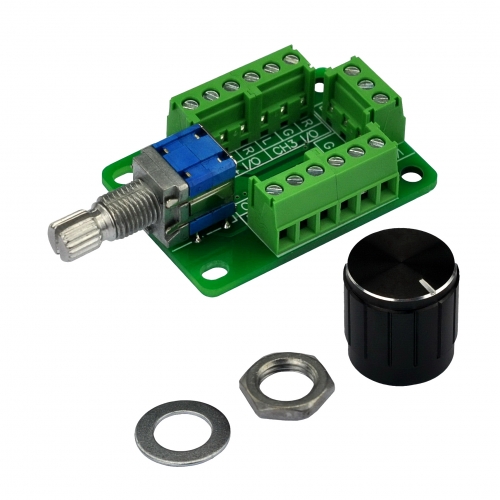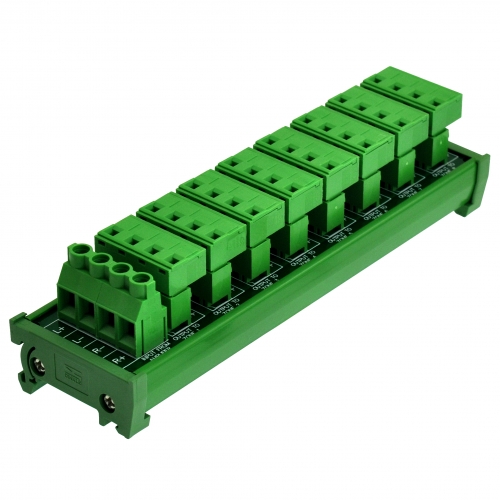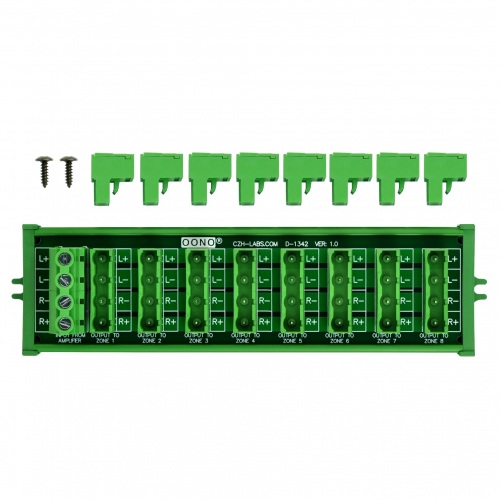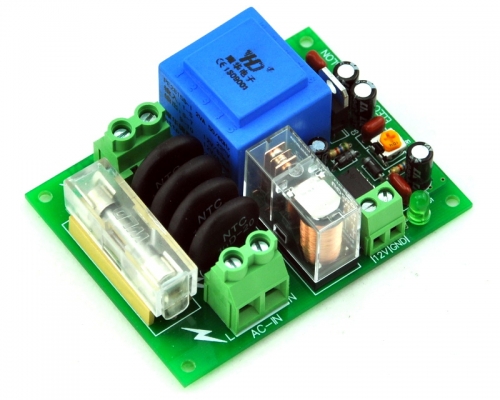Audio All Pass Filter/Phase Rotator.
This item has been assembled, and electrical test passed.
Power Supply: +/- 5VDC to +/- 18VDC ( < 200mA ).
Recommend best +/- 15VDC.
Input Impedance: 5.5k OHM ( at 1kHz Sine wave ).
Input Level: 2000mV RMS ( at Power supply +/- 9VDC).
2500mV RMS ( at Power supply +/- 12VDC).
3000mV RMS ( at Power supply +/- 15VDC).
Frequency Response: 10Hz - 100kHz ( -3dB ).
Module Size: 2" x 3" (50mm x 100mm), Max. height: 0.63" (16mm).
Datasheet: https://www.czh-labs.com/tmp/madeimg/datasheet/a-110.pdf
The following information comes from the website: http://www.w3am.com/8poleapf.html
W3AM Presents:
The Phase Rotating Asymmetry Eliminator!
(Another in a series of articles on audio processing techniques.)
Back in the 50's, Leonard Kahn noted that speech energy passing thru the delay networks necessary to generate his phasing-type carrier elimination SSB systems had the interesting attribute of measurably better symmetry about the zero axis, as compared to the original signal. Although this could be technically argued to be "distortion", as a complex waveform's shape is changed in the process, when used in communications systems no significant sacrifice is involved. In fact, a good argument for an improvement can be made. Most human voices are naturally asymmetrical in this regard, some wildly so. Most experienced AM operators are well aware of this, and usually select the phasing of their microphones into their transmitters so that the highest peaks modulate the transmitter in the positive direction. This is common good practice.
Mr. Kahn, (a brilliant engineer, inventor of AM stereo in the late 50's, and holder of many patents), applied this technique and patented, manufactured, and marketed to broadcasters his Symmetra-Peak device, which was a passive implementation of a 4-pole all-pass filter with balanced transformer inputs and outputs, (all sealed in a large, rack mounted epoxy brick!). This was intended for use in line before any audio compressors or limiters feeding the transmitter, and had the effect of requiring less limiting to control modulation peaks to a set level, thus reducing distortion and, at that time, broadband limiter pumping and breathing on the air. Stations which broadcast mostly speech programming found it to be very attractive. Thousands were sold.
The purpose of this circuit in our application has to be considered within the context of the entire audio processing chain. It is of greatest benefit when used in conjunction with aggressive clipping or limiting further down the line. It can help reduce the required depth of clipping necessary to achieve an equal level of on-air loudness, thereby indirectly reducing perceived distortion. It also has the effect of slightly lowering the peak to average ratio of the speech applied to it. That's partially the same goal we use compressors, limiters, and clippers to achieve. There is, however, no gain-intermodulation distortion created by wiggling amplifiers or hard clipping. It's like a little free money!
Circuits of this type are used in almost every broadcast audio processing system sold over the last 25 years. They are implemented even in the newest fully digital DSP audio processing systems. In fact, I'm hard put to identify more than a couple systems out there on the market that don't use APF's for this. They ALL use them, at the very least, as delay equalizers for the steep overshoot-compensated low pass filters made necessary by NRSC, FCC and EBU occupied bandwidth rules. With the extreme amounts of peak clipping in use at broadcast stations today these filters do a good job of reducing perceived distortion on speech programming elements, and are necessary if a station intends on being any kind of player in the loudness game.
I've always been puzzled why this technique isn't more widespread in ham radio. It is a cheap and effective way to reduce asymmetrical peaks with no added distortion, especially on highly asymmetrical voices when subsequent peak clipping is used for overmodulation protection. This should have great application for SSB, NBFM and AM alike. If nothing else, it can reduce that godawful pumping we hear on too many SSB stations that are wailing on their ALC to keep their average up. They should build these into all riceboxes, as far as I'm concerned.

The circuit shown above, the phase rotating asymmetry eliminator, is better known as an all-pass filter, (APF), or delay equalizer. An APF has the characteristics of flat frequency response, but frequency-dependent phase response. APF's can be either "lead" or "lag" types. That is, assuming a first order filter, at each filter pole frequency the phase response either leads or lags the input by 90 degrees. The rate of change can be increased by adding more poles, or filter sections. They can be built with passive components, (L's & C's), as in the original Symmetra-Peak, or with the active filter approach. Active filters are much cheaper and easier to build and trim, and generally more stable. APF's are actively realized by combining the output of a high-pass, low-pass, (or for a second order type, band-pass), filter with its input. The pole frequency is determined by the components used: in our case, the input shunt capacitor and the input resistor to the non-inverting input of each stage.
The filter shown is a "lead" type. In our application, this is not critically important, as it would be in a delay equalizer. The pole frequency is set for approximately 340Hz, selected for its location at the center of the majority of speech energy, (the same Fc as measured in samples of the legendary Kahn Symmetra-Peak). The phase response exhibits greater and greater delay as the input frequency goes up. One result is the energy about the zero axis tends to be distributed more symmetrically. The greater the rate of change of delay, the greater is this effect. For further in-depth info you can consult many active filter references, such as "Electronic Filter Design Handbook" by Williams & Taylor, (an excellent book).
The filter is constructed using easy to find op-amps, caps and resistors. The AD712's specified may be replaced with the more ubiquitous TLO72, found at "The Shack", or any other decent op-amp. I used 8 sections, or poles, just to be over the top. It's not necessary. You can get good results with just 2 poles, but I recommend 4 for speech, like the original Symmetra-Peak. There is no tuning required, just connect it between your mic preamp output and the first processing stage in your station, or right into your rice-box. It is unity gain and has a flat frequency response.
I have mine built into my first AGC unit, with bypass switches between the two 4-pole halves. This allows me to switch it out completely or add half or all of the circuit, just to have something to play with and talk about on the air. I usually leave all 8-poles in.
Expect to see better symmetry on your monitor scope. You will have to rely more on on-air reports from other operators, as listening to yourself on headphones can be misleading. This is because of the change in summation in your head between direct bone conduction and the now spun-around electronic signal. If you use clipping at the end of the line, you should find that you can clip significantly more before it starts to sound bad. It should also slightly improve intelligibility on the receive end. Try it out in your system and see what you think!


 USD
USD EUR
EUR GBP
GBP CAD
CAD AUD
AUD



